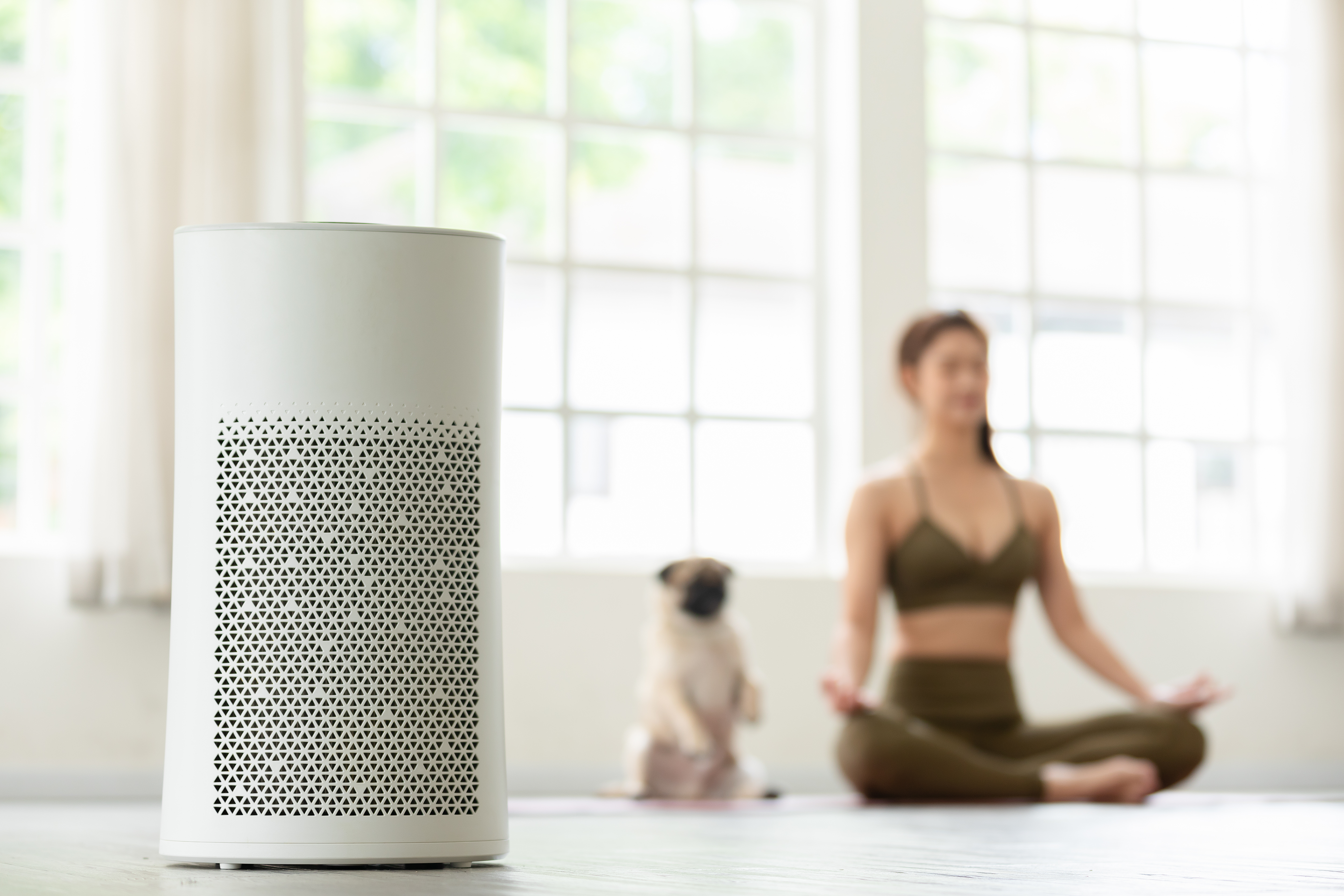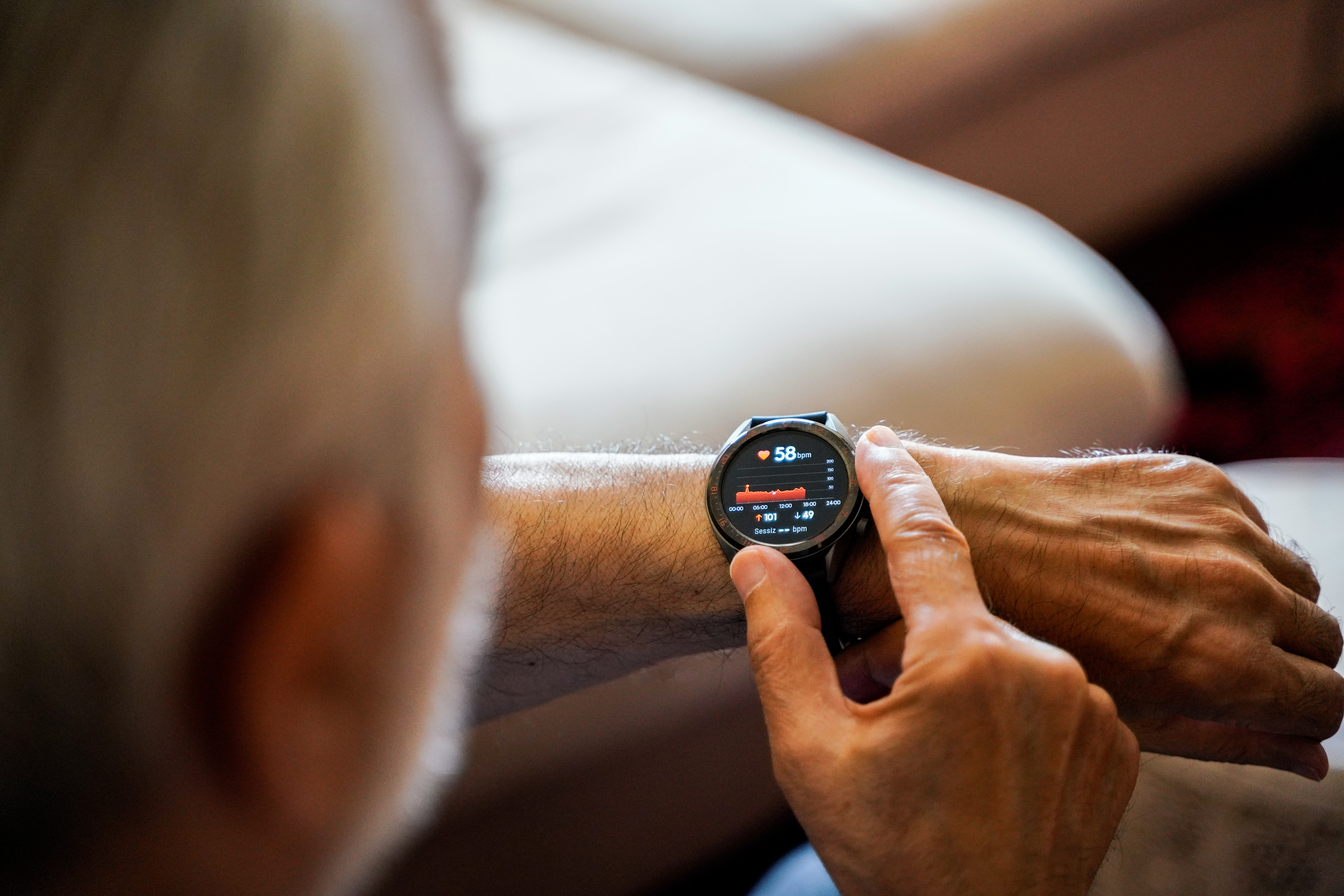COVID-19 has enhanced our focus towards digital health trends, accelerating the already flourishing connected health device market, which is expected to reach $44.2bn by 2024.1 Consumers across demographics are turning to wearable devices and biometric trackers so they can gain insight into important digital health data and maintain a higher level of health and fitness. GfK research1 shows more than a third (38%) of people agreed with the following statement, “I am passionate about health and wellness” and almost half actively look for products and services that help them take care of their health.
We are living in a post-modern era where people are having less time for themselves, and hence they’re trying to find solutions that provide them with easy ways to counter lifestyle problems.
Digitization is also affecting the way people perceive and take care of their health. So, when you see the full scope of the health category, there can be appliances that can be used for prevention, diagnosis, and treatment. The rise in awareness and focus on air quality and purification as a means to prevent, treat and diagnose future conditions, have also been made more prominent due to the pandemic.
Consumer trend is supporting digital health needs at home
Within the digital health market, prevention is a key theme for consumers. According to GfK’s 2021 research,2 when it comes to personal diagnostics, 48% of global consumers rely on a combination of prevention and treatment to maintain health. The consumer needs to understand the information upfront and any future problems they may incur. So rather than trying to treat the problem after it has occurred, why not prevent it by means of digital monitoring.
The growing popularity of digital health trends can also be attributed to new behaviors born out of more time spent at home – all of which are driving purchases in the long run. “We saw different rooms in the house get adapted for health and wellness, like kitchens for healthy cooking, bedrooms for sleep quality, and corners of rooms as our new fitness centers,” says Jane Sarasohn-Kahn of THINK-Health, a healthcare consultancy.

The pandemic has increased our awareness around the functionality of air purifiers and as a result, the appliances have become a lot more attractive to consumers turning into more digital and preventative devices in recent years3. The global market for residential air-purification equipment is expected to grow to $13bn by 2027.4
Air pollution is a global problem, and you can see a greater appreciation for combating it especially from a lifestyle perspective, where climate conditions are rapidly changing. Market leaders such as Dyson are helping consumers monitor the air quality of different environments via sensors. But true innovation in this space is portable devices such as Lufqi’s Luft Duo, which uses LEDs and photolytic tech to break down irritants and pathogens, instead of HEPA filters. It offers cleaner air up to four times the normal rate 5, promising results since there are rising concerns about some pollutants being two to five times higher in indoor air compared to outdoor air.6 Samsung’s newly launched Bespoke Air Purifier has a four-step filtration system and works to increase the airflow to capture pet hairs. This is a smart move from Samsung, as they saw sales grow by 150% in September-October 2020 in India.7
In addition, water quality and purification are also key areas of growth, and we predict positive momentum due to a higher hygiene awareness would benefit this category2. The water purification market is predicted to be worth $47.53bn by 2028 8.
At home, there also has been a rise of health monitoring devices like blood pressure monitors, and new technologies are growing to help consumers monitor their health daily.2 For example, Sky Labs’ CART-I is an AI-based heart monitoring platform. This wearable device, worn on the finger, is then connected to a mobile app and web-based platform for doctors. The digital health device has a sensor that screens the bloodstream to identify irregular pulse waves. It then transmits the data to a cloud platform where AI technology is employed to detect and analyze conditions such as atrial fibrillation. The uptake of health-tracking devices, such as CART-I could be successful since 77% of all consumers believe that tracking behaviors help to change them either a “great deal or moderately.”8
Trending digital health products are able to provide reliable at-home treatment via biometric trackers and at-home GP consultations. They can empower consumers by reducing costly medical fees and taking the strain off struggling health services.

GfK research2 also points to 80% of US consumers wanting to continue with virtual consultations post-pandemic, leading to a longer-term industry shift. You can also infer [virtual consultations] are preferable in parts of the world where healthcare centers are not as accessible.
For example, Tyto Care is an on-demand medical exam company that aims to replicate in-person visits with home medical kits which have built-in cameras, allowing medical professionals to identify health conditions. Since the app’s launch, orders of the home diagnostic kits have increased 500% and have been used by 350,000 patients since its launch in October 2020.9
Mental and physical wellness coverage
Before the pandemic, the connection between mental and physical wellness was on the rise and the global market for mental wellbeing is now worth $121bn.10 During the pandemic, mental health issues were drastically rising by as much as 50% globally, indicating the need for services across all regions.11
With recent studies showing its role in lowering anxiety12 levels and boosting immunity 13 – exercise is viewed as a preventive for many health conditions. According to GfK research,2 between Q1 and Q2 2020, health and fitness app downloads grew by 46% worldwide, and in March 2020 consumers spent a record 113 million hours on these apps.
Sarasohn-Kahn adds: “Self-care workflows at home will persist for people who want the greater agency to ‘own’ and not just ‘rent’ their health.” Seamless integration in this space includes a smarter way of recreating the fitness atmosphere at home, an example of which is Silicon Valley start-up Tonal’s Smart Flex. AI measures user effort levels and dynamically adjusts the resistance while ensuring the muscles are engaged throughout each rep. Since the company’s launch, it has reported a 700% year-on-year increase in sales in 2020.
The quest for rest is becoming a key concern as 32.9% of US adults reportedly get less than six hours of sleep a night.14 New innovations in this space are using biometric sensors to track our nocturnal health by integrating sleep aids into home technology. Google capitalized on this trend with the launch of Google Nest Hub (2nd gen), which aligns to the user’s circadian rhythms by emitting different levels of light from the device. From a global perspective, bright light therapy is worth $26m, suggesting a greater relevance of light therapy post-pandemic 2.

The digital health device is also connected to a wellness screen, where it allows people to check how many hours they have slept and how restful their sleep was. It also suggests the optimal bedtime for users and the biometric device monitors respiratory rates as well.
The future of at-home digital health wellness and wearables
Digital health devices provide better insight into the body’s function, and they have majorly changed the way we understand our health and fitness by helping us monitor our wellbeing more efficiently.15 Bespoke solutions are a leading wellness trend in this space that is key to maintaining optimal health, reflected in increased sales of digital smart devices with personal diagnostic tools growing by 58% and personal scales by 46%2. A new focus in this area is also creating opportunities for all age groups, especially when integrated with accompanying coaching to make better sense of data collected to activate healthier habits. For example, Kiko’s smart scale and stadiometer, used for measuring height, allows parents to monitor their child’s growth to check it aligns with the WHO’s statistics.
New opportunities for bespoke activity trackers that contain personal diagnostics could include the use of high-tech accelerometers embedded into clothing, which detects the speed of movement, the kind of which is being developed by Nextiles. The company has created smart thread technology that sends motion data to an app, helping athletes understand what’s working, what to aim for and any changes over time.

However, there is a downside to sharing data that needs to be addressed before the real potential of trending digital health technology can be realized. More than 70% of Americans are resistant to the idea of contact tracing apps, with many citing potential privacy and security issues16.
“During the pandemic, more consumers appreciate that their personal health information has value to it – so healthcare privacy is taking on even more importance in a person’s life,” says Sarasohn-Kahn. But blockchain’s secure encryption technology could help ease consumer privacy concerns and help drive its expansion in the healthcare space. It is also a lucrative opportunity, as the market for blockchain technology in healthcare is predicted to see 65% annual growth over the next five years.18For example, BurstIQ’s system prevents sensitive patient data on consultation apps. It uses blockchain technology to enhance the way medical information is shared or utilized.
While wellness was being harnessed by wearable devices before the pandemic, it has now become an integral part of our daily lives to live healthily due to COVID-19. Brands would do well to cater to consumers who are looking for ways to improve their physical and mental wellbeing via fitness trackers, workout apps, and biometric devices that can be used by those of all ages.
Gain a deeper understanding of your target consumers through GfK data and insights
FAQs
What is a health monitoring system?
These health monitoring devices contain biometric sensors that are often paired with different smartphone apps, in order for healthcare professionals and third parties to access medical information, specifically digital health data.
How do electronic monitoring devices work?
Electronic monitoring devices work by transmitting digital health data via wireless wearable tech devices, including personal diagnostics and GPS.
What’s trending in health and wellness?
The latest wellness trends geared towards the future of health technology include smart workout equipment, a focus on mental health, and biometric devices to prevent and diagnose future conditions.
What is health technology?
Health technology includes wearable devices, fitness trackers, and biometric trackers that are able to solve health problems and improve the livelihood of individuals by tracking digital health insights.
Sources
- Connected Health Device Market Report: Trends, Forecast and Competitive Analysis – Lucintel 2020
- GfK Health, Hygiene & Well-Being – April 2021
- Tech & durable markets today and tomorrow – Covid-19 Impact and Opportunities 2021 – Global Strategic Insights May 2021
- The “Residential Air Purification Equipment – Global Market Trajectory & Analytics”– Research & Markets 2020
- Air purifiers clean indoor air at four times the normal rate – University College of Dublin 2021
- What are the trends in indoor air quality and their effects on human health? – EPA 2021
- Dual impact of COVID-19 and smog doubles demand for air purifiers, Samsung 2020
- The global water purifier market is projected to grow from $29.12 billion in 2021 to $47.53 billion in 2028 at a CAGR of 7.2% in forecast period, 2021-2028, Fortune Business Insights
- These telemedicine companies are changing the future of doctor visits
- Global Wellness Institute Finds Mental Wellness Is a $121 Billion Market, GWI 2021
- Global prevalence of mental health issues among the general population during the coronavirus disease-2019 pandemic: a systematic review and meta-analysis, Nature 2021
- Resistance exercise training for anxiety and worry symptoms among young adults: a randomized controlled trial, Nature 2020
- The immunological case for staying active during the COVID-19 pandemic, NCBI 2020
- Are U.S. adults reporting less sleep?: Findings from sleep duration trends in the National Health Interview Survey, 2004–2017, Oxford Academic 2019
- Estimating individual optimal sleep duration and potential sleep debt, Sci Rep 2016
- Wearable devices and the promising future of personalised diagnostics, Imperial College London 2017
- Majority of Americans Say They Won’t Use COVID Contact Tracing Apps, Opinion Matters, 2020
- Blockchain Technology In Healthcare Market Recent Trend and Advancement in Healthcare Sector 2020-2026, Market Insights Reports 2020




